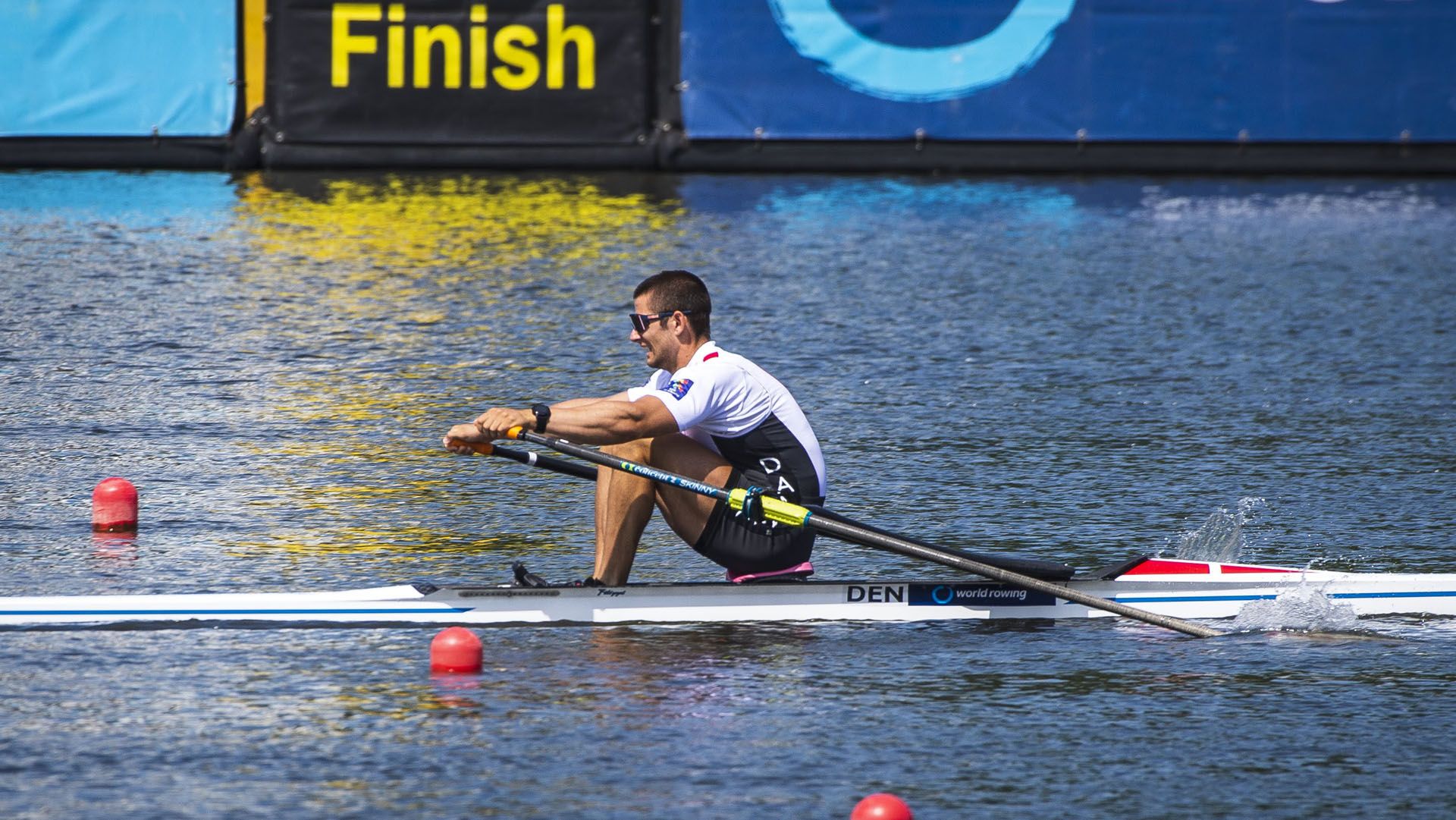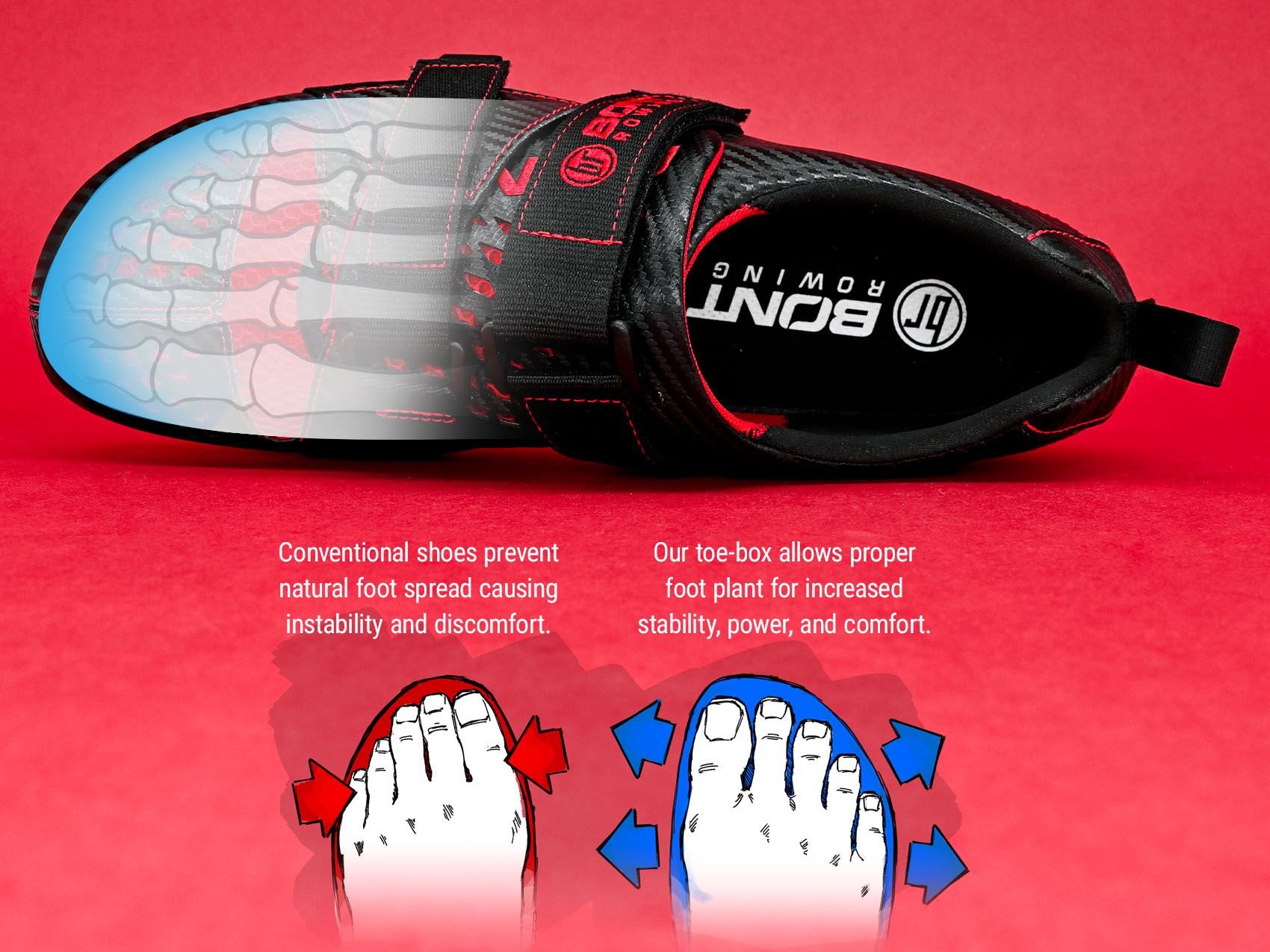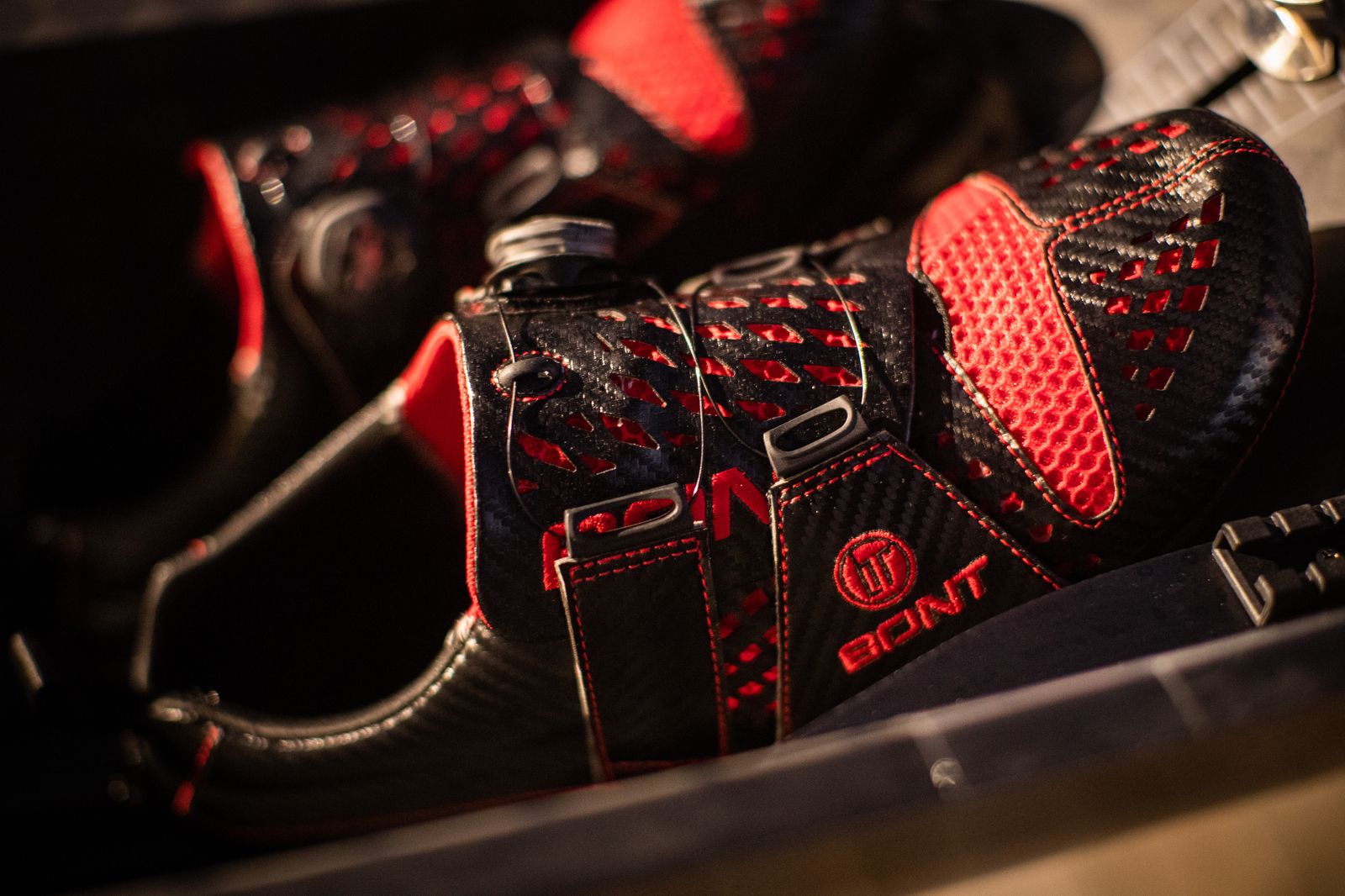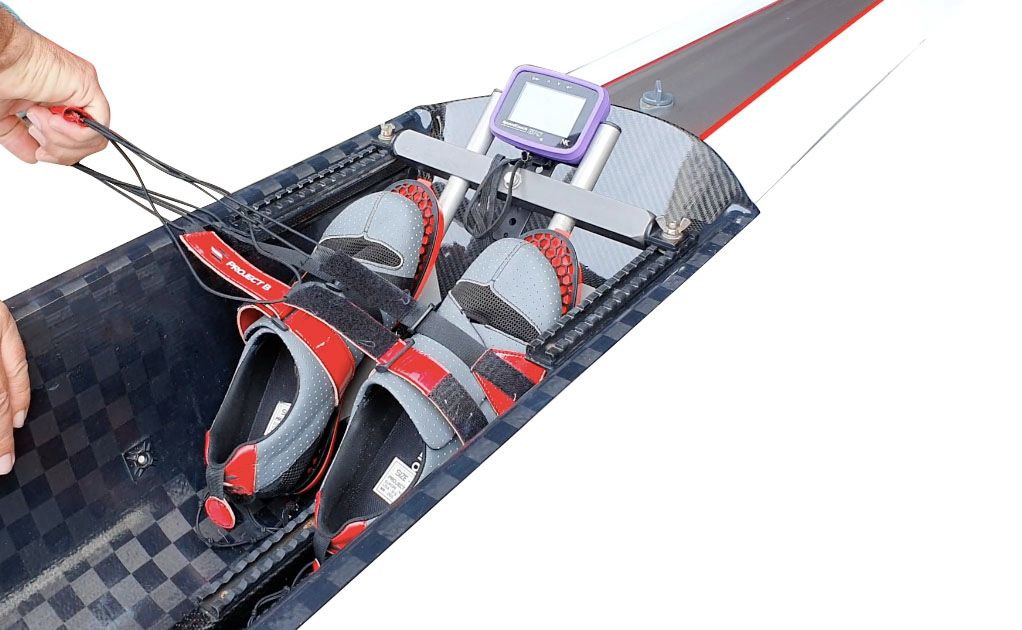Shoe Guide
What are rowing shoes?
Rowing shoes are footwear fitted to foot stretchers to allow your foot to be stabilised and locked into a predetermined position.
No other sport we know of puts shoes through the same amount of stress as rowing. If you consider club shoes will be shared amongst a number of people (options now exist for quick release systems to allow individual footwear, to be covered later) and are often used for 4 hours or more per day, the average rowing shoe will be bent in half in excess of 4,800 times per day (estimated on 4 hours use at 20 strokes/minute) whilst being exposed to heat, water, sweat, etc.
The correct rowing shoe can assist with comfort and greatly improve performance.

What is the importance of rowing shoes? What are the benefits?
Better Performance
Force or power transfer is the amount of energy your leg drive will produce that is actually transferred against the foot plate and turned into motion/speed.
Correct size rowing shoes and rowing specifically designed shoes will assist in ensuring maximum power can be transferred limiting wasted energy, making you more efficient.

Size matters
One of the common issues seen in rowing is incorrect size. Often rowers are rowing in shoes significantly bigger than required. This all translates to wasted energy. Every stroke you take your feet will move in the shoe prior to reaching their anchor point and working to propel the boat forward. Conversely when coming up to the catch rowers in oversized shoes will be experiencing their heels coming out of the shoes and wasting energy to ensure their foot is retained in shoes.

Rowing specific shoe design
Whilst all rowing shoes will help in correct size, some rowing shoes have extra benefits and sports specific design features.

Anatomical Fit and Biomechanical Efficiency
Throughout the rowing stroke cycle (drive and recovery) the foot changes shape significantly. Correctly designed rowing shoes will take these changes in shape into consideration to allow the foot free movement without nerve impingement whilst providing structural foot support and stability to assist in injury prevention.

Technical Innovations that drive speed and efficiency
Contact point in rowing is critical. You spend time and energy training countless hours to become the most efficient and fit athlete you can be.
Technical innovations in designing and manufacturing rowing shoes now allows you to stop wasting energy and ensure the force you produce is being applied where it’s most needed.
Plastic or rubber sole rowing shoes have a high absorption rate and dampen power produced. Bont Rowing shoes have been designed with a split carbon sole that not only flexes at the most anatomically correct position possible, but also assist in the transfer of power with zero dampening effect and loss of power.
Rowing Shoe Maintenance
As with all equipment, rowing shoes also need care and maintenance so that they can keep performing at their best. Look after your equipment and your equipment will look after you.
Cleaning
Rowing shoes are put under a lot of stress and exposed to extremes of elements. Rain, salt water, sun, sweat whilst being bent in half 4,000+ times per day on average are just part of daily routines for shoes in boats.
If the shoes are fixed in the boat and have been exposed to salt water or excessive sweating make sure when washing your boat you also rinse the shoes to remove salt water. When racking the boat ensure the shoes are left open to dry.
If you are one of the lucky ones and are able to remove the shoes via quick release system and they have not been exposed to salt water, simply take out the shoes and allow them to air. If they have been exposed to salt water or excessive sweating, rinse, remove from boat and allow to dry.
In both cases partially removing the innersole will assist with faster drying.
Dirty shoes can be wiped down with damp cloth or cleaned with mild dishwashing soap.

Maintenance
Regularly check closing systems such as Velcro or quick release dials to ensure they are in working order.
Check heel ties to make sure they are attached properly and ties are in good condition. Taking your feet out of shoes can be very difficult when capsized without proper heel tie attachment.
Ensure safety straps are attached to both shoes and in good working order. This is critical to safety.
Nuts and bolts should be checked periodically to ensure they are tightened properly. Use of Loctite can ensure they maintain correct tension for a longer period.

Bont Rowing Shoe Sizing
Bont Rowing shoes are the most anatomically correct rowing shoes currently available. They have been designed using data collected on foot shapes via 20,000 laser scans of feet and in-shoe pressure mapping through the drive and recovery phases of a rowing stroke.
As with any shoes, correct sizing and fit will ensure their best performance.
To find your correct size, please see our shoe comparison size chart or simply follow the instructions in our sizing wizard.